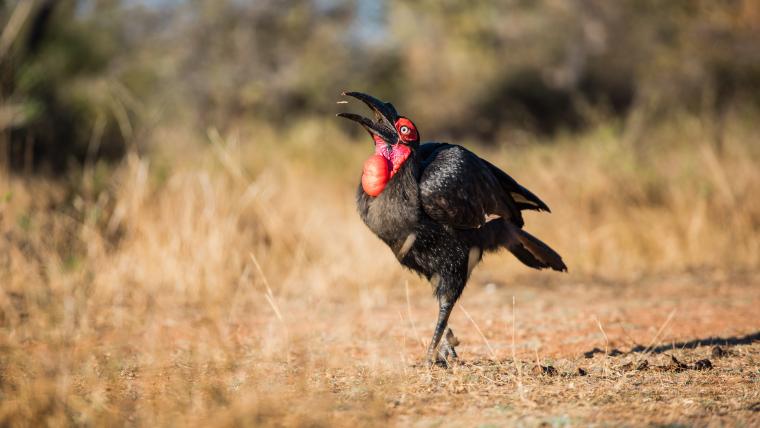
Why the runts are ruling the flying gangs of the savannah
A booming call reverberates nearly three kilometres away. From a distance, it can be mistaken for a lion’s roar. The sound isn’t emanating from the king of the jungle, but the flying gangs of the savannah – southern ground hornbills. With dagger-like beaks sprouting from their serious faces and uniform pitch-black plumage, these birds are guarding their territory. Yet their intimidating tactics are no match for habitat loss. The effects of climate change and urban developments have decreased their range by two thirds in South Africa, making them critically endangered in the region. Now, conservationists are stepping in to safeguard the next generation of hornbills.
Southern ground hornbills are the largest species of hornbill and can live up to 70 years. Groups of approximately 11 members are led by their leader and his mate. Responsible for guiding and controlling the flock, they’re also the only pair who produce offspring. In the fight for survival, the first of up to three hatchlings usually outperforms the others and beats them for food. This means that every six years when the birds breed successfully, there’s only one hornbill chick who will live to adulthood.
Those who survive are facing greater threats than having to defend their turf and chicks. If they’re not losing their nesting trees, they’re electrocuted by transformer boxes. With the southern ground hornbills already low reproductive rates, the team at the Mabula Ground Hornbill Project are aiding their chances of survival by caring for the second-hatched young who would’ve otherwise died from starvation. Once they’re reared, the hornbills are rewilded and released. Through these efforts, they’re ensuring that even the runts get a chance to rule this feathered mafia.






























Please sign in to leave a comment